Types of currents. ac/dc
What does it mean: ac/dc? Ok, apart from a rock group?
There’re two types of current, defined based on the directions of the movement of the electrons. An electric current is called a direct current (d.c.) if electrons always flows in one direction. An electric caused by a chemical cell or a battery is a direct current.
If an electric current in a circuit reverses direction every so often, it is called an alternating current (a.c.). For example, the current that flows through an domestic light bulb when connected to the mains electricity supply reverses direction 100 times every second and is therefore an a1ternating current.
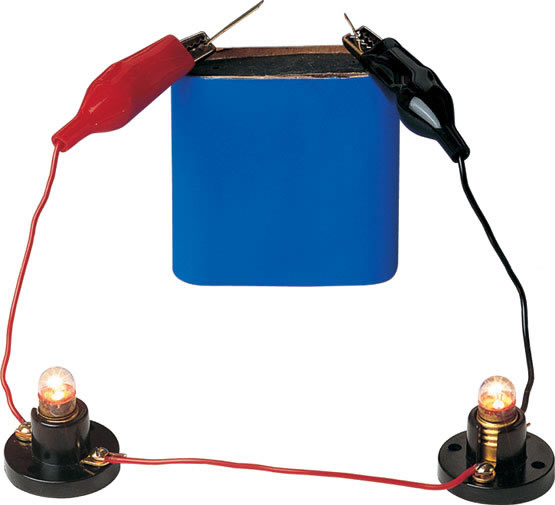
The circuit on the left is called a series circuit. There is only one path for the electrons to move. Electrons do not build up or leak away from the wire at any point, thus the same amount of charge is passing through every point at any given second.
How can we measure the current?
To measure the size of an electric current we use an ammeter. Smaller currents are measured on milliammeters.
The current is the same at every point in the wire in a series circuit.
If a million electrons leave the positive terminal in the battery, a million electrons will arrive at the negative terminal of the battery.
Of course, if every electron makes a works to light up the bulb, its energy will be reduced every time it passes the bulb. They lose potential energy.
The Current at a junction of conductors
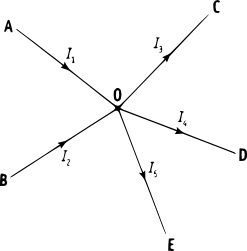 We have seen that electrons do not disappear in a circuit. In the next diagram we have five conductors meeting at a point ‘O’ (in the diagram center). There are 2 wires carrying current towards the junction and 3 wires carrying current away from the junction and no electron is lost or stored up at the junction, thus:
We have seen that electrons do not disappear in a circuit. In the next diagram we have five conductors meeting at a point ‘O’ (in the diagram center). There are 2 wires carrying current towards the junction and 3 wires carrying current away from the junction and no electron is lost or stored up at the junction, thus:
The sum of the current flowing into a junction = The sum of the current leaving the junction.
In this case, I1 + I2 = I3 + I4 + I5
Example: If I3 = I2 = 10 Amp and I4 = I5 = 3 Amps, calculate the value of I1
Exercises:
1º Find the current flowing through wire W in the next figure:
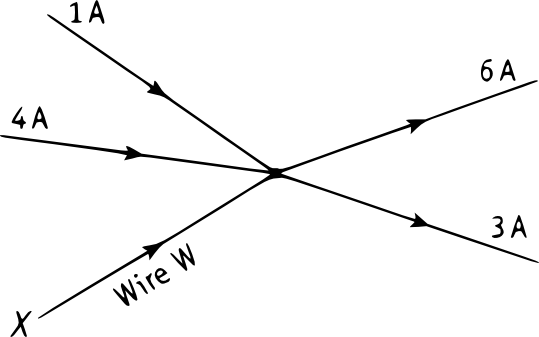
2º Find the value of the current X in every circuit shown in the next figure
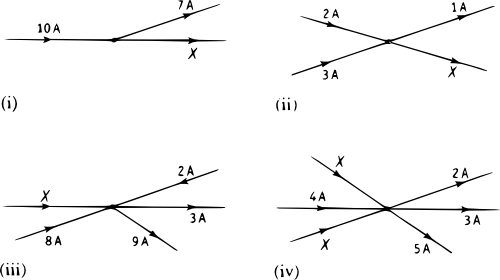
3º) What the reading on each of the ammeters in the next exercises
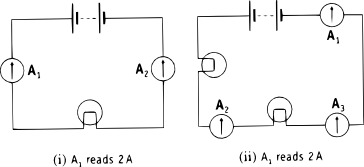
4º In the next circuit, A3 reads 2A and the bulbs are identical. What do A1 and A2 read?
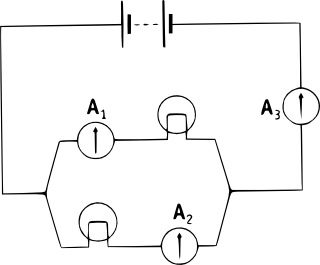
5º A2 reads 10A. The bulbs are identical. What are the values of A1, A3 and A4
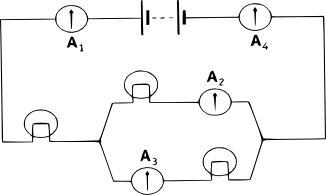
6º The bulbs are different. A2 reads 7A and A4 reads 20A. Calculate A1 and A3
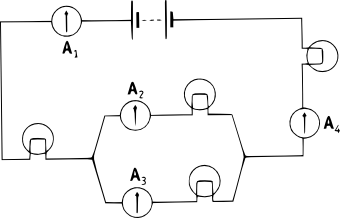
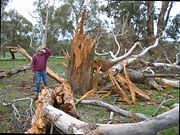
Electricity always take the shortest path (way) to the ground.
As your body is 60% water and that makes you a good conductor of electricity, if a lightning falls on a tree and you touch the tree you become the best path ( the path with of least resistance ) to the ground and you have a good chance of getting electrocuted.
On the left, A Eucalyptus tree that was blown apart by a lightning strike
Lightning Safety:
- If you are outdoor, avoid high ground and open spaces and all metal objects, including wires. Unsafe sites include trees, rain shelters or electricity pylons. Never touch the sides of a car.
- If you are indoors, avoid water, stay away from the doors and windows. Do not use the telephone. Unplug and stay away from electrical appliances, computers and Tv sets
Appliances: machines, using electricity, that do a job for us in the house.
Pylons: An electricity pylon or transmission tower is a tall, usually steel, structure used to support overhead electricity conductors for electric power transmission.
